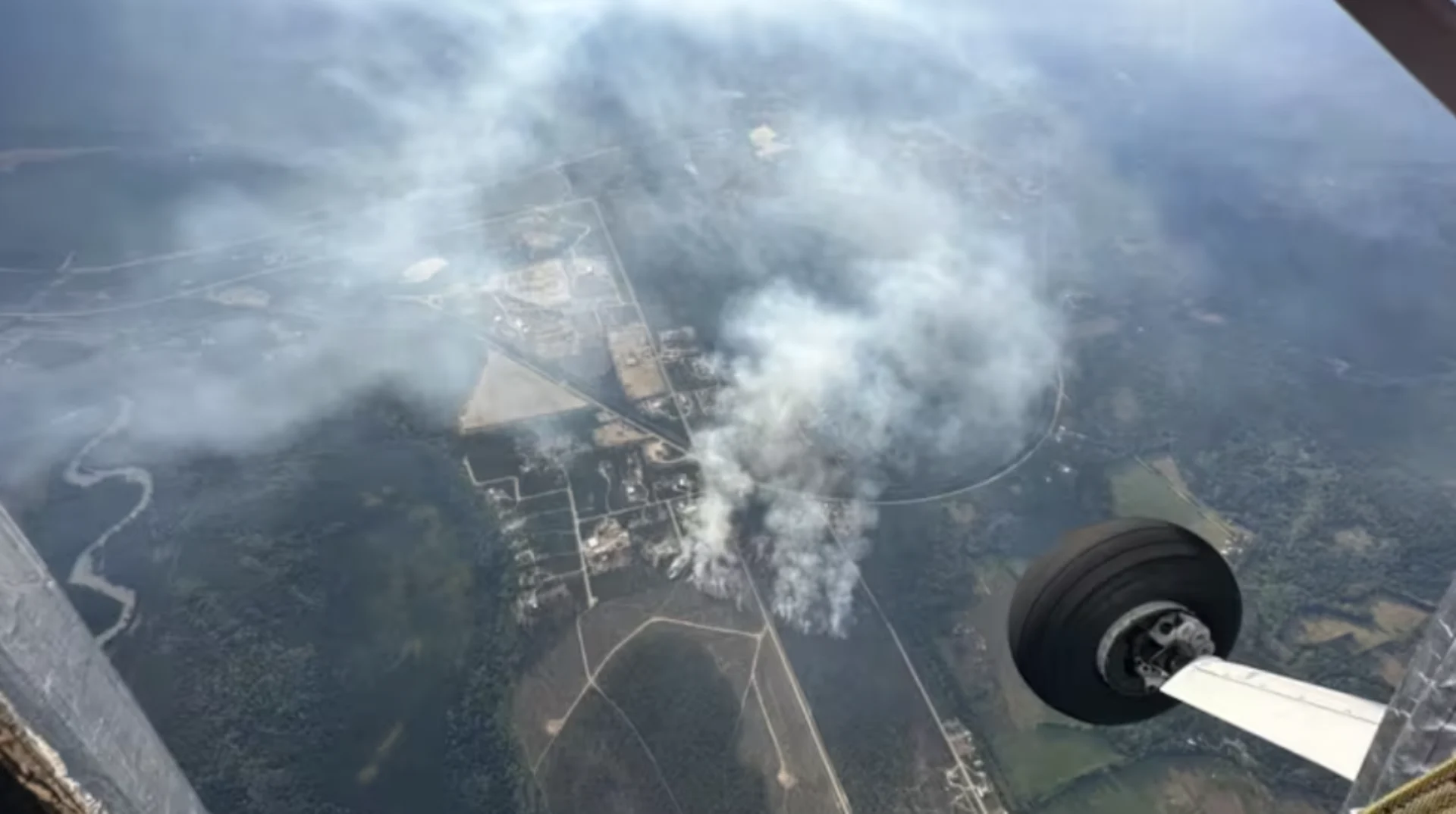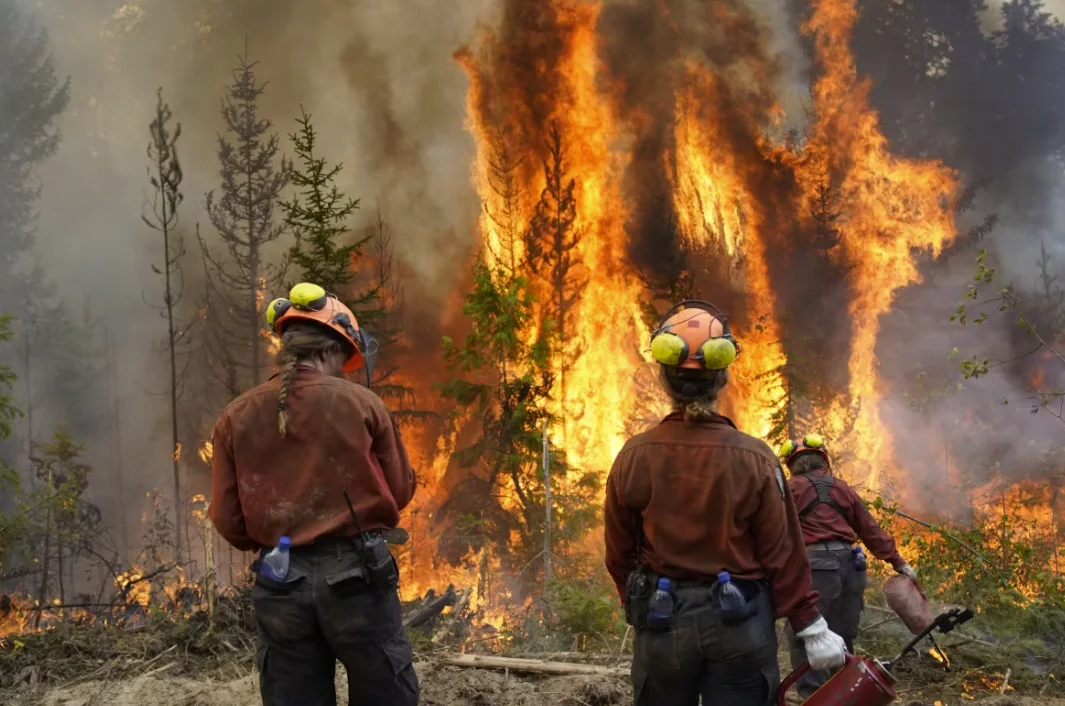
Evacuation order for some Valemount, B.C., residents downgraded
The evacuation order issued for some areas south of Valemount, B.C., earlier Saturday evening has been downgraded to an evacuation alert, meaning residents there can return to their homes but must be ready to leave on short notice.
The community of Valemount, about 260 kilometres southeast of Prince George, B.C., is home to about 1,000 people, according to the 2021 census.
On Saturday evening, the Canoe Road wildfire — burning less than five kilometres from the village — had prompted the Regional District of Fraser-Fort George and the Village of Valemount to issue the order.
The new evacuation alert covers properties east of Whiskeyfill Road, south of Cedarside Road, and the north end of Kinbasket Lake.
The B.C. Wildfire Services (BCWS) says ground crews are fighting the wildfire, alongside Valemount Fire Department personnel, with support from air tankers, skimmers and helicopters.
CANADA'S WILDFIRES: Visit The Weather Network's wildfire hub to keep up with the latest on the active wildfire season across Canada.
"B.C. wildfire and local resources, [like] the Valemount Volunteer Fire and Rescue Department, quickly deployed knowing just ... how quickly it could get up and going," Valemount Mayor Owen Torgerson told CBC News Saturday evening.
"So hats off to first responders for getting after it right away."
As of Saturday night, the fire, named G32044 on the B.C. Wildfire Service dashboard, was less than one square kilometre in size.
More than 400 fires burning
More than 400 wildfires are burning across B.C. as of Saturday evening, according to the BCWS.
In a report Saturday, the service says a period of hot and dry weather combined with lightning activity is driving new wildfire starts and could intensify existing fires.
The service is forecasting a significant chance of lightning for the southern Interior on Saturday afternoon.
It says more than 1,700 personnel are responding to fires across B.C., and more than 260 wildfires have been declared out in the preceding seven days, as of Saturday morning.
BCWS fire information officer Sarah Budd told CBC News Friday that August is usually the most intense month for wildfires in B.C.
On Saturday, Environment Canada issued several heat warnings for regions in the B.C. Interior, as well as Fort Nelson in the northeast.
The majority of the wildfires active in the province are caused by lightning, according to the service. Budd said the wildfire service expects small fires started by lightning, that cannot yet be detected, will become visible as the humidity continues to drop.
"You might see a lightning strike. Then [a fire] will smoulder slowly, and as conditions warm and dry — often, wind is what does it — that will really kick those kinds of fires up," she said. "When we're getting more oxygen into the fire, those fires pop up and become visible to our scanning."
Environment Canada issued thunderstorm watches for several regions of the province Saturday, including the Fraser Canyon, South Thompson, Similkameen and Nicola.

Philippe-Alain Bergeron, a meteorologist with Environment and Climate Change Canada, said he expects hot and dry weather to continue over the weekend, before temperatures across the province return to seasonal norms early next week.
"Those temperatures will still be warm summer temperatures, but much closer to normal," he said.
SEE ALSO: A trio of robin's eggs provides a symbol of hope after wildfires in N.L.
While some parts of the province may see light rainfall next week, Bergeron said it would be very localized.
He added the wildfires are causing smoky skies across much of the province.
Evacuation order issued west of Quesnel
The Cariboo Regional District in central B.C. ordered residents on 30 parcels of land in the Kuyakuz Lake area, west of Quesnel, to evacuate immediately on Friday night.
Three out-of-control wildfires are burning nearby — all of which are suspected to be lightning-caused — prompting the regional district to issue the order on Friday "due to immediate danger to life."
An accompanying evacuation alert is also in place for 28 parcels of land in the surrounding area, covering more than 880 square kilometres.

B.C. wildfire fighters look at a planned ignition as they fight the Dogtooth Forest Service Road blaze in B.C.'s southeast on Aug. 2, 2024. (B.C. Wildfire Service)
Campfires banned in most of B.C.
The hot and dry weather has led the BCWS to reinstate its ban on campfires in northwest B.C. as of noon Saturday.
Campfires remain prohibited across the province, except in the Prince George Fire Centre covering north-central and northeast B.C.
According to Natural Resources Canada, human-driven climate change means hot and dry weather will happen more often, drying out plant matter that fuels fires, and creating the conditions in which they thrive.
Researchers also expect climate change to increase the amount of lightning in the province, which could lead to more fires starting.
Thumbnail image courtesy of the B.C. Wildfire Service.
This article was originally written by and published for CBC News on Aug. 10, 2024. It contains files from Meagan Deuling, Isaac Phan Nay and The Canadian Press.









